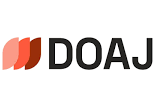About the journal
The Journal of Sports Physiology and Athletic Conditioning received A grade in Islamic Azad University's 2024 annual evaluation of publications. Published articles derived from the doctoral dissertation will receive a credit of 2.4 points in the defense
The Journal of Sports Physiology and Athletic Conditioning is a scholarly publication focusing on exercise and sports physiology research. The Quarterly journal has received approval for publication from the Journals Commission in Iran, as confirmed by the Deputy for Islamic Azad University (IAU)—Humanities and Social Sciences. The journal's website can be accessed at http://eval.journals.iau.ir/?view=514. The Journal of Sports Physiology and Athletic Conditioning is committed to upholding the highest ethical standards mandated by ethical laws. Every article accepted for publication in this journal will undergo a meticulous review using Plagiarism Detection Software, ensuring the integrity and quality of the published work. Authors are required to include their ORCID ID on the title page. This is a crucial step in ensuring the accuracy and credibility of the published work. Both the first author and the corresponding author are required to fulfill this obligation. The task can be accomplished by clicking on the link provided below: The website http://orcid.org Authors can use this template to write an article
-
Open Access Article
1 - Effect of Moderate Aerobic Exercise Combined with Cannabinoid Supplementation on P53 Gene Expression in Rats with High-Fat Diet-Induced Non-alcoholic fatty liver disease (NAFLD)
Masoumeh Mohamadkhani ، Mandana Gholami ، Mandana Gholami * ، Mandana Gholami ، Heshmatolah Parsian ، Hossein AbednatanziIssue 17 , Vol. 5 , Summer 2025 -
Open Access Article
2 - Comparison of Tabata Training Effects on Physical Fitness and Body Composition in Female University Students With Normal Weight and Overweight: A Quali-Experimental Study
Zahra Mirzashaeri ، Farshad Ghazalian * ، Shahin SalehiIssue 17 , Vol. 5 , Summer 2025 -
Open Access Article
3 - The Effect of Turmeric and Ginger Herbal Plants on Endurance Performance in Athletes: A Systematic Review
Zahra Morteza Pour ، Elham Farhadfar * ، Zahra SarlakIssue 17 , Vol. 5 , Summer 2025 -
Open Access Article
4 - The Simultaneous effect of high-intensity interval training (HIIT) and omega-3 supplementation on malondialdehyde (MDA) levels in the serum of obese male rats.
Zohreh Nasirizadeh ، Abbas Fattahi Bafghi *Issue 17 , Vol. 5 , Summer 2025 -
Open Access Article
5 - Aerobic training affects the expression of oncogenic genes in prostate tissue in male rats
Hossein Manzouri ، Mohammad Ali Azarbayjani * ، Hasan MatinhomaeeIssue 17 , Vol. 5 , Summer 2025 -
Open Access Article
6 - The effect of 8 weeks of hydrotherapy and land based exercises on strength, balance, range of motion and pain reduction in elderly women with history of both knees replacement
Behnaz Hajirezaei ، Abdolrasoul Daneshjoo * ، Ali Reza IzadiIssue 17 , Vol. 5 , Summer 2025
-
Open Access Article
1 - Comparison of the effect of selected Pilates exercises, Traband training and weight training on strength and flexibility in elderly women
Seyed Kazem Mousavi Sadati * ، Reza BehdariIssue 4 , Vol. 2 , Spring 2022 -
Open Access Article
2 - Effect of beta-alanine supplementation on carnosine amount and muscle strength of the upper and lower extremities of bodybuilding athletes
Amir Abbasi ، Shahin Riyahi Malayeri * ، Seyed Kazem Mousavi SadatiIssue 1 , Vol. 1 , Summer 2021 -
Open Access Article
3 - The Effect of One Session of the Exhaustive Exercise & Caffeine Consumption on Muscle Fatigue Levels & Anaerobic Power of the Professional Female Karatekas
Reza behdari * ، Soudabeh Ghasemi ، Seyed Kazem Mousavi SadatiIssue 2 , Vol. 1 , Autumn 2021 -
Open Access Article
4 - Comparison of functional screening test score in dentists with and without upper cross syndrome
Behnaz Hajirezaei ، Abdolrasoul Daneshjoo *Issue 9 , Vol. 3 , Summer 2023 -
Open Access Article
5 - Long-term effect of endurance training with myoclinic diet and calorie control on fat profile of overweight women
Maryam Rasouli Saniabadi ، Abdolrasoul Daneshjoo * ، Alireza EizadiIssue 2 , Vol. 1 , Autumn 2021 -
Open Access Article
6 - The effect of aerobic training and probiotic intake on gene ICAM–1 expression in rats with nonalcoholic fatty liver
Samaneh Hadipour Ahmadi ، Abdolrasoul Daneshjoo *Issue 1 , Vol. 1 , Summer 2021 -
Open Access Article
7 - High intensity interval training and Eryngium billardieri extract consumption on MMP-2 gene expression of visceral fat in rats with metabolic syndrome
Mostafa Haji Gholami ، Shahin Riyahi Malayeri * ، Asal ziloubaf ، Hedyeh HassanpourIssue 3 , Vol. 2 , Winter 2022 -
Open Access Article
8 - The effect of supplementation of HMB (beta-hydroxy betamethyl butyrate) and plyometric exercises on performance and body composition of elite parkour athletes in Tehran
Abdolrasoul Daneshjoo * ، Motahare Ghane ، Morteza AhmadiIssue 3 , Vol. 2 , Winter 2022 -
Open Access Article
9 - The effect of exercise and vitamin B6 on the expression of COX2 and IL-1B genes in endometrial tissue of endometriosis rats
Fatemeh Rashidpour ، Parvin Farzanegi * ، Hajar AbbaszadehIssue 6 , Vol. 2 , Autumn 2022 -
Open Access Article
10 - The effect of chocolate milk consumption on muscle damage enzymes of men professional football players
Amir Rajabi Jahroodi ، Reza Behdari *Issue 6 , Vol. 2 , Autumn 2022








